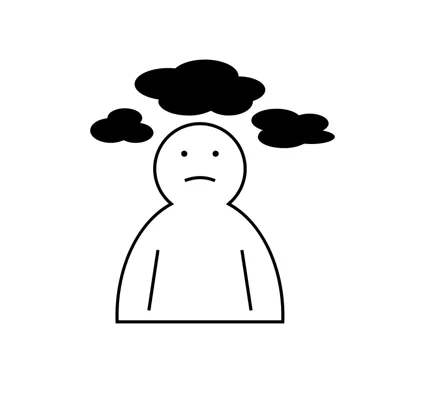The term ‘Anxiety’ describes the feeling of being worried, afraid or generally tense. This is normally in reaction to an upcoming event, or a predicted happening.
But sometimes feelings of anxiety can become particularly intense – and get to the point where it becomes a mental health condition. In general, if someone’s feelings of anxiety cause them to live their life not how they want to, they may well have an anxiety-based condition.
There are several different anxiety conditions, each with their own set of symptoms. While knowing the exact type of Anxiety disorder isn’t essential, it is recommended that a patient knows which form is most suitable for them – as this should mean the correct treatment is provided.
While Generalised Anxiety Disorder is the most common type, often a sub-type is more applicable. The causes of the different types of Anxiety isn’t always clear, as is why some people develop certain types of anxiety and not others

What is Anxiety?
Anxiety: Anxiety in its simplest form is a feeling of being worried, afraid, or generally tense – usually in anticipation of an imminent event, or a predicted event. Anxiety is a perfectly natural emotion, with the vast majority of people going through periods of anxiety in their life. However, for some people anxiety is a constant problem which can be hugely detrimental to their quality of life. Anxiety can easily impact someone’s ability to live their life as they would hope to. Worrying can sometimes get out of control, making it near-impossible to live life in a healthy way. This typically leads to impairment in several different areas of life. The term ‘Anxiety’ can be applied to a host of mental health conditions, with Generalised Anxiety Disorder and Social Anxiety Disorder just two of many conditions.
What are the different types of Anxiety?
Generalised Anxiety Disorder (GAD): The most common type of anxiety, this disorder encompasses a broad range of symptoms. In general, the symptoms include regular and intense worries about many different areas in life. This is a difficult condition to live with, and can lead to a marked change in behaviour, with avoidance a common response.
Social Anxiety Disorder: This form of anxiety is applicable when an individual becomes overwhelmingly anxious in social situations. Someone with Social Anxiety Disorder may dread any sort of social situation, making life complicated. Social anxiety disorder is a difficult condition to live with, though treatment is available.
Panic Disorder: This type of anxiety affects individuals who have regular panic attacks – often without a cause. Panic attacks are very distressing events to go through, and sometimes the fear of having a panic attack only acts to deepen the anxiety of an individual. Understandably, this is a very difficult condition to live with.
Phobias: A phobia is a form of anxiety that involves an intense fear that is triggered by either an object or situation. There is no shortage of phobias, with Claustrophobia among the most well-known. Agoraphobia is a well-known condition which people with Anxiety regularly suffer from. Phobias can stop an individual from living their normal day-to-day life.
Agoraphobia: Agoraphobia is a common phobia that is associated with anxiety. Agoraphobia describes the fear of being in a situation where escape might be difficult. Agoraphobia is an example of a complex phobia – which has a marked effect on the life of an individual. They may struggle to leave their home, and is often linked to panic attacks.
Selective Mutism: Selective Mutism is a severe anxiety disorder which is characterised by an individual being unable to speak in certain social situations. While predominantly seen in children, the disorder can persist into adulthood. The individual affected literally cannot speak in some situations, it isn’t out of choice. They will be able to speak regularly to some people, such as close family or friends.
Summary
Often, symptoms will overlap between these various sub-types of anxiety. There are though some key differences.
Many people find that anxiety often accompanies other mental health conditions, such as Depression. Fortunately, with any anxiety disorder, full recovery is always possible.
See Also
- What Are The Different Types of Anxiety?
- What Are The Symptoms of Anxiety?
- What Are The Causes of Anxiety?
- How is Anxiety Diagnosed?
- How Can Anxiety Be Treated?
- What is the Prognosis for Anxiety?
- 10 Tips for Living With Anxiety
Disclaimer
This website should be used purely for informational purposes, and does not intend to, nor should it ever, be used as a replacement for professional medical advice.
We strive to keep all of our pages updated, and ensure that our website is full of factual and in-depth information. However, we encourage you to browse this website with care.
As a reminder, this website and all content within it cannot and should not replace the advice of a trained medical professional. You can read our full disclaimer at this link.
Helplines
If you are struggling with your mental health, help is available. With the right support and treatment, you can make a recovery. For information on helplines, or if you are in a state of crisis, please visit our crisis page by clicking on the relevant link for your geographical location (United Kingdom), (United States), (International). You can also see how to get mental health treatment and the process involved by clicking this link.






























